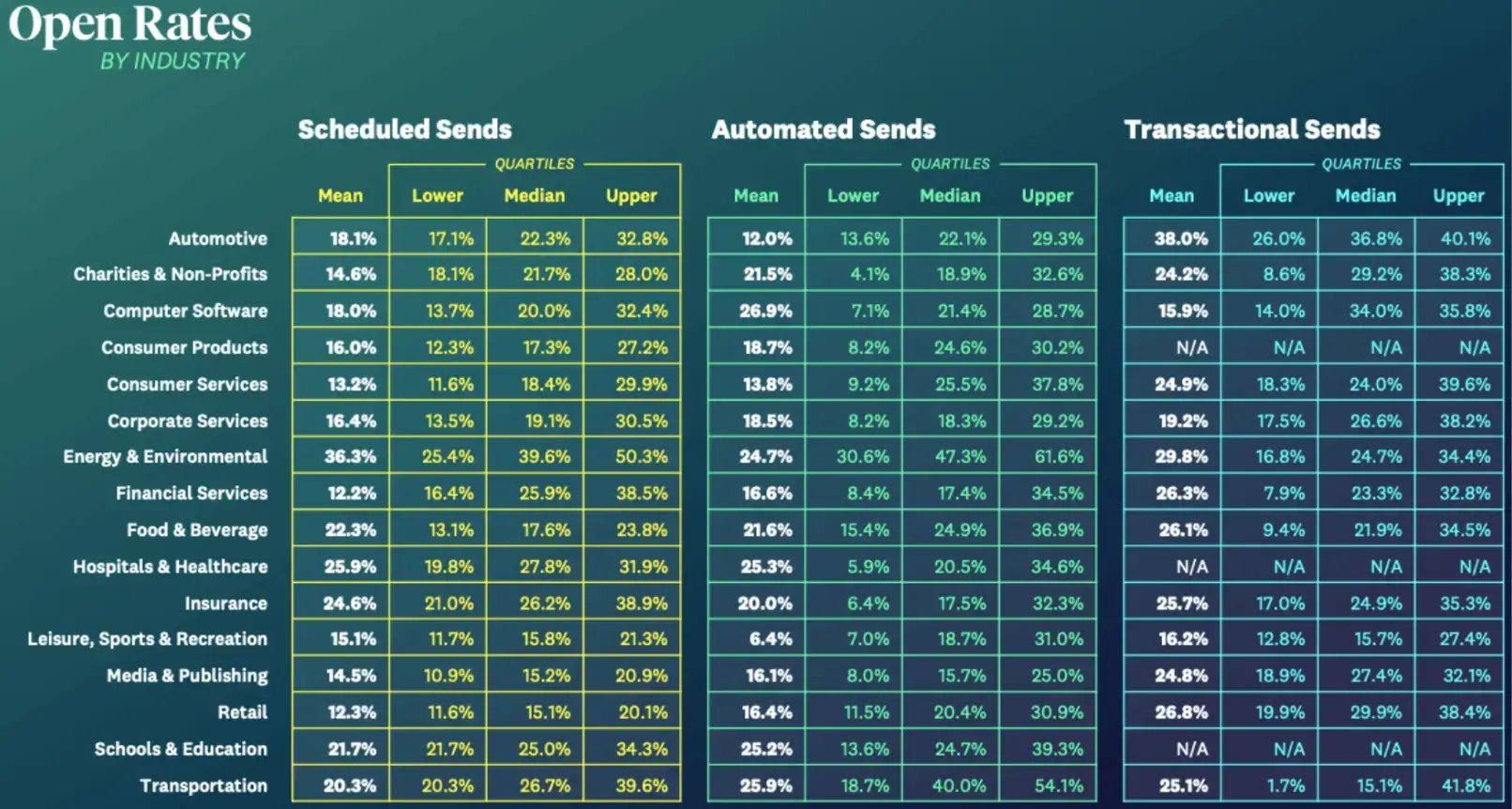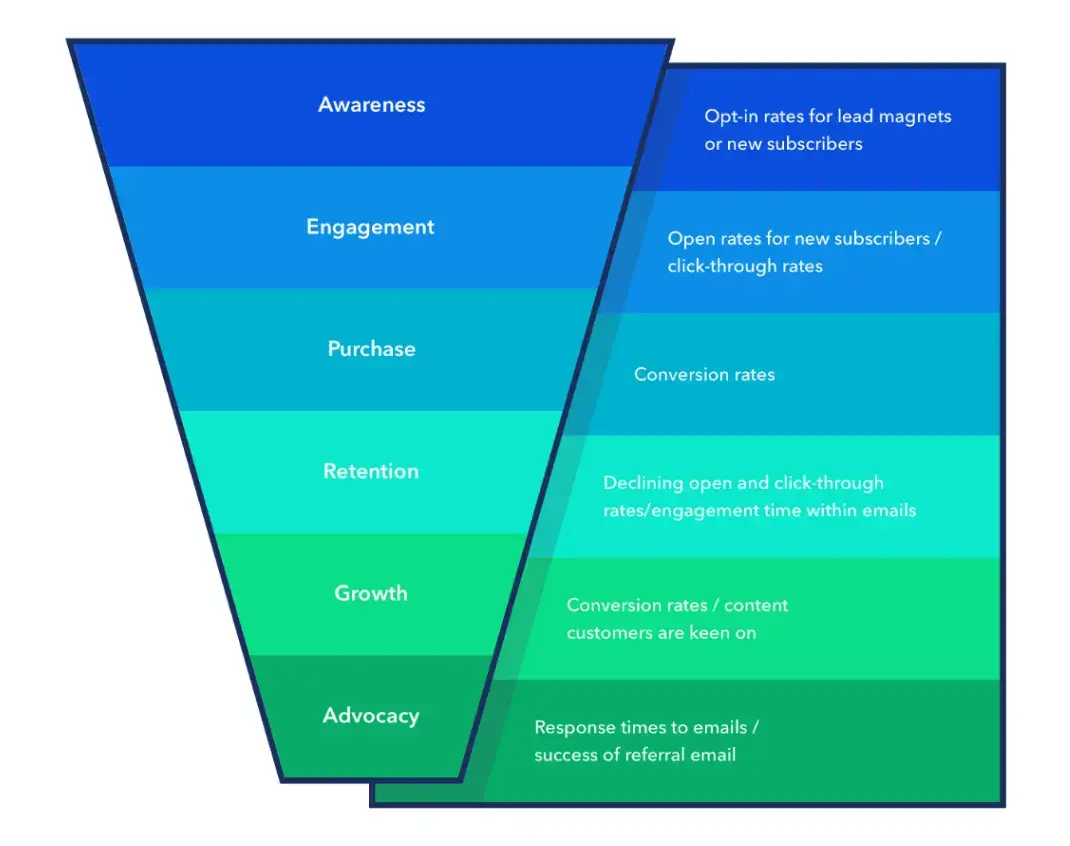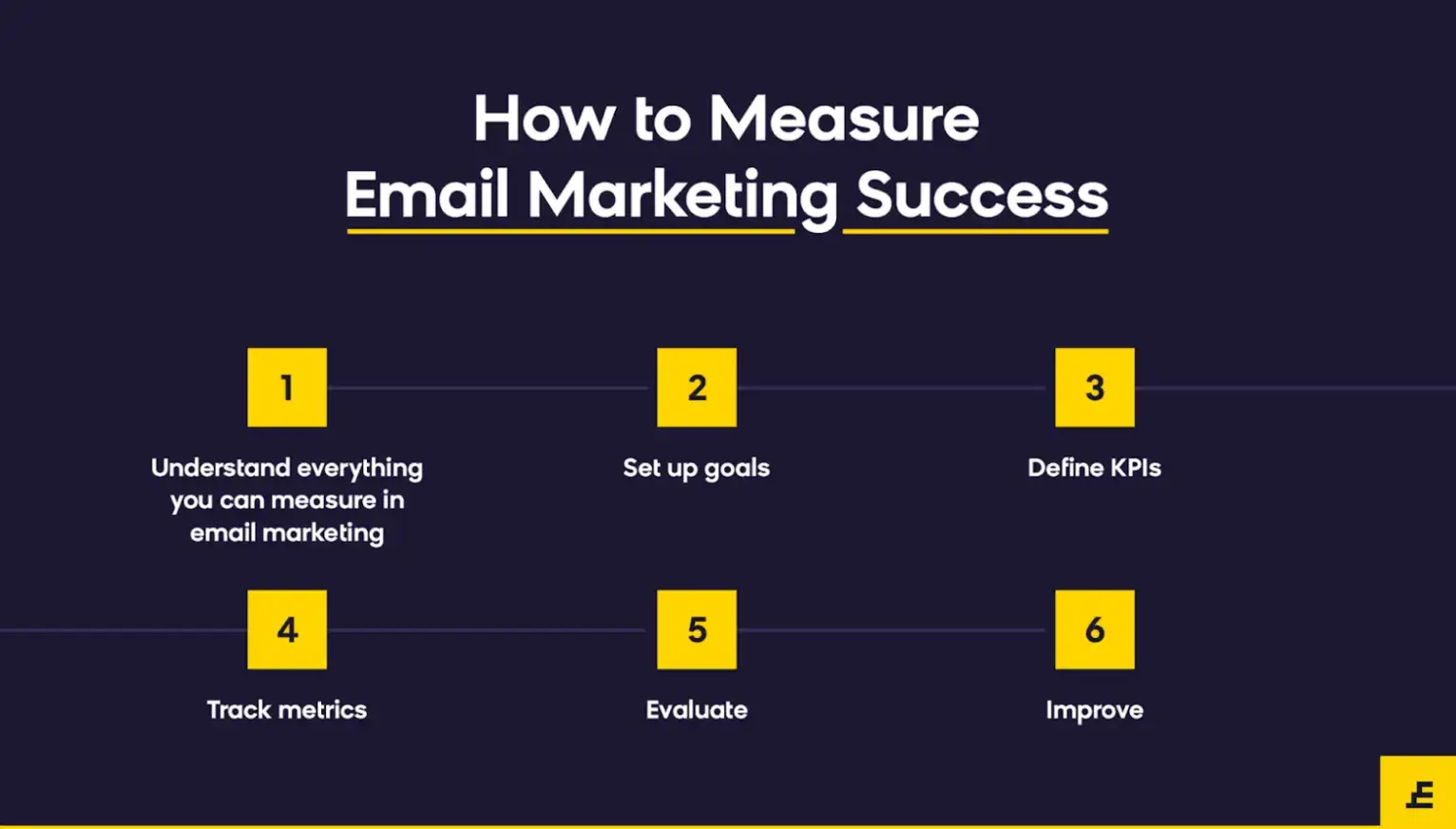Ever wondered how to measure the success of your email campaigns or which metrics matter the most? We're diving deep into the world of email marketing metrics.
Think of it as a compass guiding you through the vast ocean of email marketing. Ready to set sail? 🚢

Open Rate
Ever heard the saying, "First impressions last?"
Well, in the email marketing world, the open rate is that first impression. It tells you how many recipients opened your email. To boost this metric, focus on crafting compelling subject lines.

How to Calculate: (Number of Emails Opened / Number of Emails Sent) x 100
Pro Tip: Craft compelling subject lines that resonate with your audience to boost open rates.
Click-Through Rate
The click-through rate (CTR) measures how many recipients clicked on a link within your email.
A high CTR shows that more and more recipients are navigating from the email to your site. To improve this, ensure your content is engaging and your call-to-action buttons are irresistible.
How to Calculate: (Number of Clicks / Number of Emails Opened) x 100
Pro Tip: Use clear and enticing call-to-action buttons to improve CTR.
Bounce Rate
Bounce means the email didn't reach the recipient's inbox. There are two types: hard bounces (permanent issues) and soft bounces (temporary issues).
Keep an eye on this metric and regularly clean up your email list.
How to Calculate: (Total Number of Bounced Emails / Total Number of Emails Sent) x 100
Pro Tip: Regularly clean and update your email list to reduce bounces.
Unsubscribe Rate
The unsubscribe rate tells you how many recipients opted out of your emails.
While it's natural to have some unsubscribes, a high rate can be a red flag. Ensure you're sending relevant content and not overwhelming your subscribers by sending too often.
How to Calculate: (Number of Unsubscribes / Number of Emails Sent) x 100
Pro Tip: Ensure content relevance and frequency to minimize unsubscribes.

Conversion Rate
The conversion rate is your golden ticket. It measures the number of recipients who took the desired action, such as making a purchase.
To boost this metric, align your email content with your landing page and offer incentives.
How to Calculate: (Number of Desired Actions Taken / Number of Clicks) x 100
Pro Tip: Align email content with landing pages for higher conversions.

List Growth Rate
The list growth rate shows how your email list is growing. It's the difference between new subscribers and unsubscribed. To nurture this metric, offer valuable lead magnets and promote your sign-up form.
How to Calculate: ((Number of New Subscribers - Number of Unsubscribes) / Total Number of Email Addresses on Your List) x 100
Pro Tip: Offer valuable incentives for sign-ups to boost list growth.
Forwarding Rate
The forwarding rate measures how many recipients share your email with others. Encourage this by creating share-worthy content.
How to Calculate: (Number of Emails Forwarded / Number of Emails Sent) x 100
Pro Tip: Create shareable content to encourage forwarding.
Engagement Over Time
Email marketing isn't a sprint; it's a marathon. This metric tracks how engaged your subscribers are over time. Monitor it to identify trends and adjust your strategy accordingly.
How to Calculate: Monitor metrics like open rate, CTR, and conversion rate over a specific period.
Pro Tip: Adjust email frequency and timing based on subscriber behavior.
Email Sharing Rate
This metric shows how many recipients shared your email on social media. Boost this by including social sharing icons and creating viral-worthy content.
How to Calculate: (Number of Shares on Social Media / Number of Emails Sent) x 100
Pro Tip: Include easy-to-use social sharing buttons in your emails.
Revenue per Email
This metric tells you how much revenue each email generates. To increase this, segment your list and send targeted offers.
How to Calculate: Total Revenue Generated by Email Campaign / Total Number of Emails Sent
Pro Tip: Segment your audience for targeted offers to boost revenue.

Source: vero
Subscriber Acquisition Cost (SAC)
The SAC metric tells you how much it costs to acquire a new subscriber.
A lower SAC means you're getting more bang for your buck.
To optimize this, focus on cost-effective marketing strategies and streamline your sign-up process.
How to Calculate: Total Cost of Acquisition / Number of New Subscribers
Pro Tip: Optimize your sign-up process to reduce acquisition costs.
Revenue per Subscriber (RPS)
RPS measures the average revenue generated from each subscriber.
A higher RPS indicates that your subscribers find value in your offers.
To enhance this, tailor your content to your audience's preferences and needs.
How to Calculate: Total Revenue / Total Number of Subscribers
Pro Tip: Engage subscribers with personalized offers to maximize revenue.
Subscriber Lifetime Value (SLV)
SLV represents the total revenue you can expect from a subscriber throughout their time with you.
A higher SLV means your subscribers stick around and engage more. To boost this metric, focus on building strong relationships and offering consistent value.
How to Calculate: Average Revenue per Subscriber x Average Subscriber Lifespan
Pro Tip: Focus on long-term engagement strategies to increase SLV.
Aligning Metrics with Business Goals
Every business has unique goals, from boosting sales to enhancing brand awareness. Your email marketing metrics should align with these goals.
For instance, if brand awareness is a priority, open rates, and email sharing rates might be more relevant. If sales are the end game, conversion rates and RPS will take center stage.
Strategies to Improve Key Metrics
- Segmentation: Not all subscribers are created equal. Segment them based on behavior, preferences, or demographics. Tailored content often results in better engagement.
- A/B Testing: From subject lines to email design, always be testing. Small tweaks can lead to significant improvements.
- Personalization: In today's digital age, personalization is not a luxury; it's a necessity. From addressing the subscriber by name to tailoring content based on past behavior, personal touches can significantly boost metrics.
Conclusion
And there you have it! A comprehensive guide to the essential email marketing metrics you need for 2024.
Remember, these metrics are your compass, guiding you to email marketing success. So, keep an eye on them, adjust your strategy, and watch your campaigns soar!
In the vast ocean of digital marketing, a solid email marketing strategy is the lighthouse guiding your ship. They provide clarity, direction, and insights that can transform your email campaigns from good to great.
If you're looking to further optimize your email marketing strategy, don't sail alone. Contact your email marketing team for expert guidance and support.

FAQs
- What's the most important email marketing metric?
While all metrics offer valuable insights, many experts consider the conversion rate to be the most crucial as it directly relates to ROI. - How often should I check my metrics?
It's a good practice to check metrics after every campaign. However, a monthly review can be beneficial for a broader perspective. - Can I improve my open rate?
Absolutely! Crafting compelling subject lines and segmenting your list can significantly boost your open rate. - Why is my unsubscribe rate high?
It could be due to various reasons, from sending too many emails to not delivering relevant content. It's essential to analyze feedback and adjust accordingly. - Are email marketing metrics the same for every industry?
While the metrics remain consistent, the average rates might vary depending on the industry. - Why is the open rate important?
The open rate gives you insight into how effective your subject lines are. A high open rate indicates that your subject lines are compelling and resonate with your audience. - What's a good click-through rate?
A good CTR varies by industry, but generally, a rate above 2% is considered above average. - How can I reduce my bounce rate?
Clean up your email list regularly, remove inactive subscribers, and ensure you follow best practices for email deliverability. - Why are people unsubscribing from my emails?
There could be various reasons for this, such as irrelevant content, too many emails, or the fact that they no longer need your service. Regularly survey your audience to understand their needs. - How can I boost my conversion rate?
Ensure your email content aligns with your landing page, offer incentives, and segment your list to send targeted offers.
Author Bio
Jordan Brannon is President and Co-founder of Coalition Technologies, a leading US digital agency.
For the last decade, Jordan has led Coalition's team of experts as they drive outstanding outcomes to hundreds of businesses through SEO, SEM, Paid Social, Email Marketing and Web Design.
Jordan is an annual keynote speaker at the Global eCommerce & Retail Forum and a presenter for BigCommerce, Shopify, Yotpo, and other digital marketing-focused events and conferences.
- Website: https://www.
coalitiontechnologies.com/ - LinkedIn: https://www.linkedin.com/
company/coalition-technologies - YouTube: https://www.youtube.com/
channel/UCHz_ 8i8QzJO7EcPSDSfeXQg - Instagram: https://www.instagram.com/
coalitiontech/ - Facebook: https://www.facebook.com/
CoalitionTech - Twitter: https://twitter.com/
coalitiontech



